Europe, British Isles, South-West England, Wiltshire, Stonehenge Landscape, Stonehenge Monuments and Burials, Stonehenge Burials
Stonehenge Burials is in Stonehenge Monuments and Burials, Stonehenge Bronze Age.
Europe, British Isles, South-West England, Wiltshire, Stonehenge Landscape, Stonehenge Monuments and Burials, Stonehenge Burials, Amesbury Archer and Companion [Map]![]()
The Amesbury Archer [Map] is the remains of a man aged around forty at the time of his death from the Alps who was buried in Amesbury around 2300BC and discovered in May 2002 during the development of new housing. He is named 'The Archer' as a consequence of the large number of arrowheads found with him. His grave contained the largest number of artefacts of any grave of a similar period including the earliest known gold objects in England, five beaker funerary pots, three tiny copper knives, sixteen barbed flint arrowheads, a kit of flint-knapping, metalworking tools including cushion stones and some boar tusks. On his forearm was a black stone wrist guard. A similar red wrist guard was by his knees with a shale belt ring and a pair of earrings, the oldest gold objects found in England. An eroded hole in his jaw showed that he had suffered from an abscess, and his missing left kneecap suggests that he had an injury that left him with a painful lingering bone infection. His remains are on display in the Salisbury and South Wiltshire Museum [Map].
The Amesbury Archer's Companion is the remains of a man raised locally aged between twenty-five and thirty at the time of his death buried around 2300BC near to the Amesbury Archer. He appears to be related to the Amesbury Archer as they shared a rare hereditary anomaly, calcaneonavicular coalition, fusing of the calcaneus and of the navicular tarsal (foot bones). Inside his jaw were found a pair of gold earrings or hair ornaments in the same style as the Amesbury Archer's.
Photos sourced from Salisbury and South Wiltshire Museum [Map] and Wessex Archaeology.
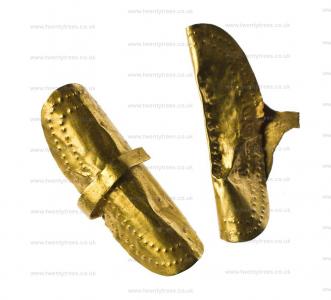
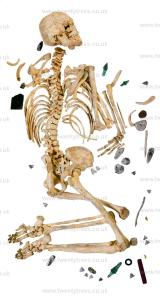
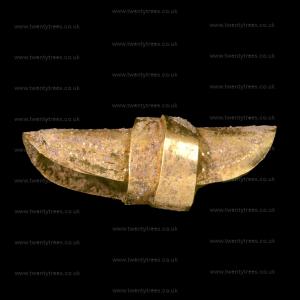
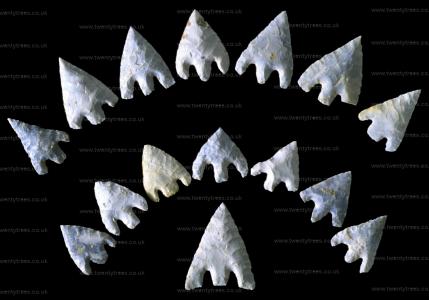
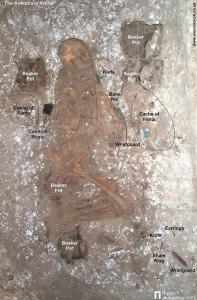
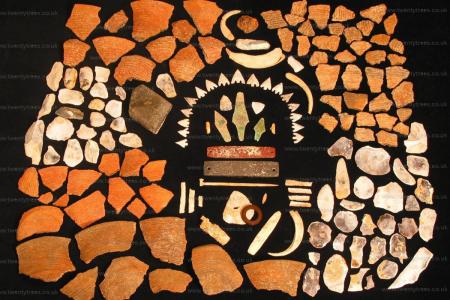
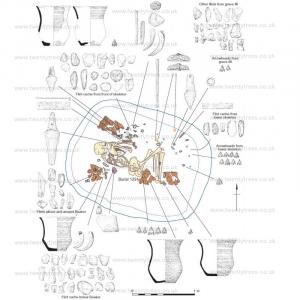
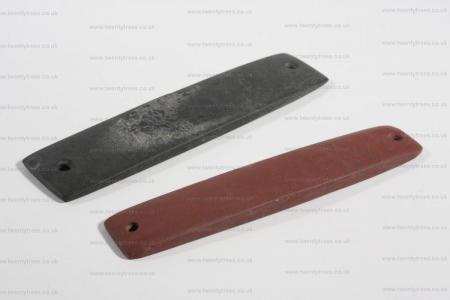
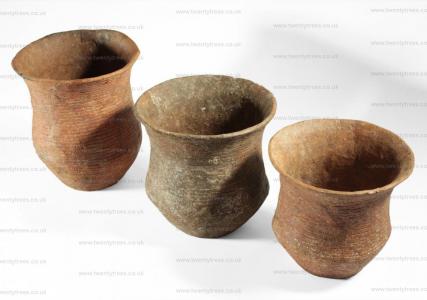
Europe, British Isles, South-West England, Wiltshire, Stonehenge Landscape, Stonehenge Monuments and Burials, Stonehenge Burials, Boscombe Bowmen [Map]![]()
2300BC. Boscombe Bowmen [Map] is the remains of a shared burial of around 2300BC found at Boscombe Down Amesbury. The grave contained seven burials: three children, a teenager and three men. The teenager and men appear to have been related. The eldest man was buried in a crouched position with the bones of the others scattered around him, and their skulls resting at his feet. Several flint arrowheads, a boar tusk, flint tools and eight Beaker Ware vessels were found found with the remains. Lead isotope analysis indicates the men grew up in South Wales or the Lake District. The remains are on display at Salisbury and South Wiltshire Museum [Map].
Europe, British Isles, South-West England, Wiltshire, Stonehenge Landscape, Stonehenge Monuments and Burials, Stonehenge Burials, Stonehenge Archer [Map]![]()
2300BC. Stonehenge Archer [Map] is remains of a man aged around thirty at his death who died around 2300BC found in the Outer Ditch of Stonehenge. With his remains were a stone wrist guard and a number of flint arrowheads. Several of the arrowheads' tips were located in the skeleton's bones, suggesting that the man had been killed by them.
In 1978 his remains were excavated by Richard J C Atkinson and Professor John G Evans. The remains are now in display in Salisbury and South Wiltshire Museum [Map].